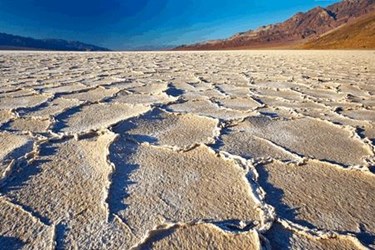Is Water Shortage The Next Big Short?

By Jim Lauria

The other night, my wife, Laurie (yeah, that's right, she's Laurie Lauria) and I saw the movie The Big Short. We were looking forward to seeing this film, as both of us had read Michael Lewis’ book, which tracked the build-up and burst of the credit bubble and followed several investors who made fortunes betting that the system would collapse. Besides the anticipation of seeing the movie, it was a big night for me — it was the first time I could use my senior discount at a movie theater. And based on the financial shenanigans revealed in the story, as I head into my retirement years, it’s clear I won't be the only one living on a "fixed" income.
At the end of the film, a postscript stated that one of the story's protagonists, Dr. Michael Burry (played by Christian Bale), was now focused on investing in only one commodity: water. That got my attention, so I started looking for information on Burry.
In an interview with Jessica Pressler in New York magazine, Burry explained his new investment focus:
"The last line of the movie, printed on a placard, is “Michael Burry is focusing all of his trading on one commodity: Water.” It sounds very ominous. Can you describe this position to me?
Fundamentally, I started looking at investments in water about 15 years ago. Fresh, clean water cannot be taken for granted. And it is not — water is political, and litigious. Transporting water is impractical for both political and physical reasons, so buying up water rights did not make a lot of sense to me, unless I was pursuing a greater fool theory of investment — which was not my intention. What became clear to me is that food is the way to invest in water. That is, grow food in water-rich areas and transport it for sale in water-poor areas. This is the method for redistributing water that is least contentious, and ultimately it can be profitable, which will ensure that this redistribution is sustainable. A bottle of wine takes over 400 bottles of water to produce — the water embedded in food is what I found interesting."
Burry, with characteristic vision, has tapped into the concept of virtual water. The idea of virtual water was first floated (sorry, I speak in water metaphors) by Professor John Anthony Allan of King's College in London, who measured how much water is embedded in the production and trade of food products — in the inputs, production, processing, and transport of food. This idea was further explored by Lester Brown, founder of the Earth Policy Institute, who stated in his book Plan B: Rescuing a Planet Under Stress and a Civilization in Trouble, "to trade in grain futures is to trade in water futures."
In the interview, Burry also mentions “the greater fool theory” of investment. That refers to the idea that an investor can make money buying securities because there is always some idiot willing to pay more for them. Big pools of fools create bubbles like the one that burst in 2008. Burry explains that what he is doing in water is not playing the greater fool theory. He’s looking at water as a very rational investment.
At some level, investing in water is going back to our most fundamentally valuable commodity. After all, gold may glitter and diamonds may shine, but if markets ever lose their interest in jewelry, we’ll still need water and the food we produce with it. The old real estate investment saw — “they’re not making any more of it” — applies just as well to water as to land.
Burry ends the New York interview with a strong and optimistic endorsement of American innovation. He points to health care and tips his hat to Uber and Lyft. But he could just as easily note the significant advances in innovation around water, from the U.S. and other nations.
Of course, there are the efficiency advances that are often spotlighted when people talk about innovation in water — game-changing tools like drip irrigation, evapotranspiration-driven irrigation systems and other “more crop per drop” technologies. And with agriculture accounting for 70 percent of the water consumed for human activity, it’s vital that we continue improving our water use efficiency.
But there’s another side of innovation that investors like Burry must also keep in mind: technologies that improve the precision with which farmers can work with other inputs such as fertilizers, nutrients, and pesticides. Some of that innovation will be driven by regulations that protect water resources, including Section 303(d) of the federal Clean Water Act or California’s Sustainable Groundwater Management Act. Some will be driven by public pressure in the wake of water crises like the algal blooms that contaminated the drinking water supply of Toledo, OH, last year, or the hypoxic “dead zones” that plague the Gulf of Mexico and the Baltic Sea every summer.
Farmers will have to plan, record, and track their inputs, and technology will be vital every step of the way. It’s not just because a growing and increasingly affluent global population demands more food, fuel, and fiber from our finite supply of water. It’s because efficient use of water starts with protecting our water resources — keeping them clean and ready for use, reuse, and ultimately, return to the environment. To accomplish that, we’re going to need every bit of innovation, enthusiasm, and vision we’ve got. It helps to have probing intellects like Michael Burry’s engaged in the conversation.
Because if all we do is wait for investors to sell short on water, we’ll all end up short.
